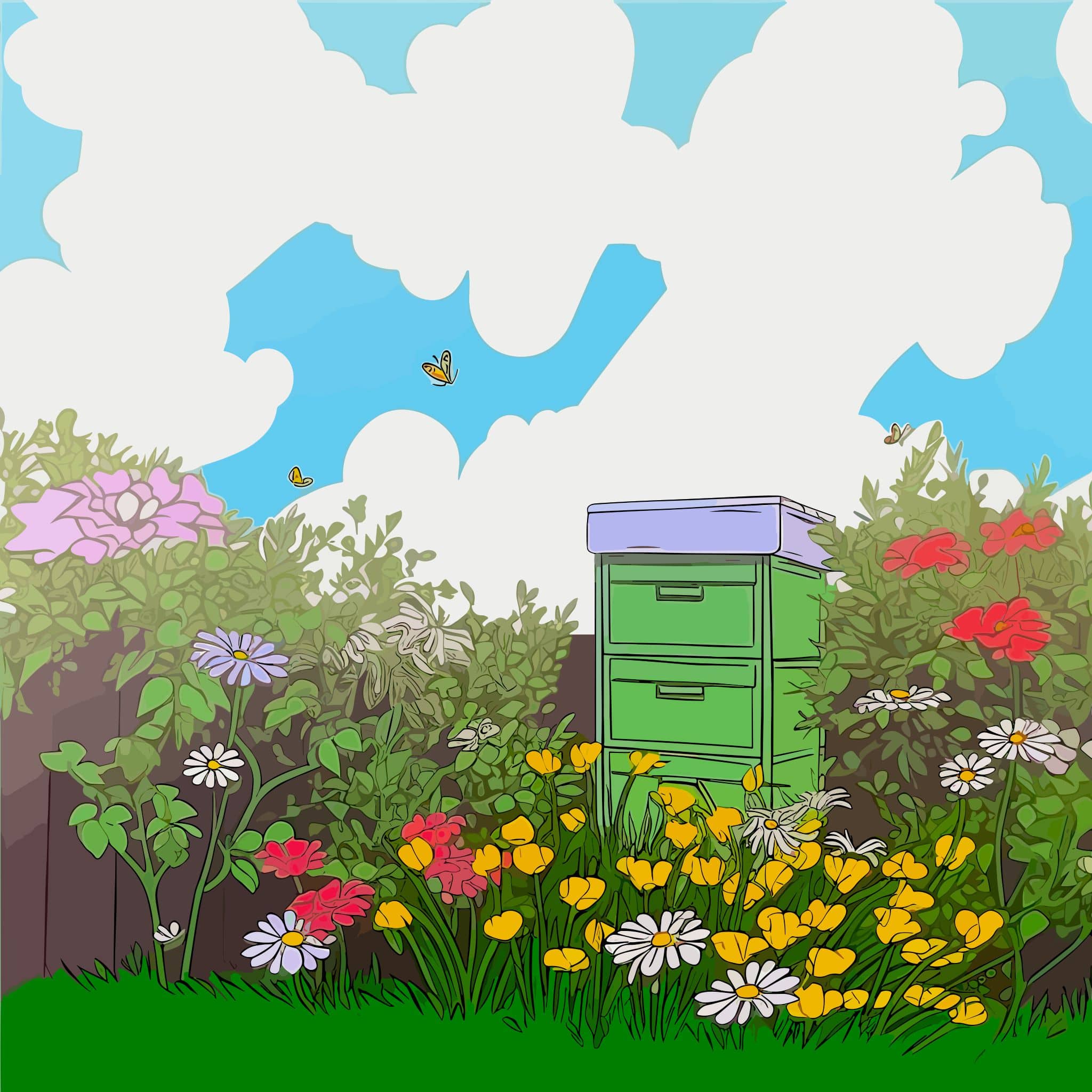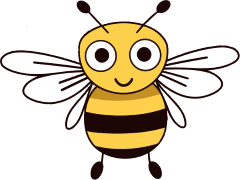Your basket is currently empty!
December ’24 – 1kg summer honey tubs available
We’re continuing to see an incredible number of return customers for our M33 Honey. Some claiming miracle allergy cures and others simply loving the flavour and consistency. We have therefore taken the time to look at the average customer spend and have sourced containers which mean we can now offer 1kg tubs of summer honey for £24. To put this into perspective, this offers a £9 (about 27%) saving compared to the same amount of honey should it be purchased in individual jars. We hope this provides value for those wanting larger quantities and perhaps want to experiment with some home baking and brewing as we are.
On the subject of brewing, whilst learning about mead, we came across bochet. This is a mead made by caramelising the honey before fermentation. The thought of a caramelised honey beverage sounded amazing, so we set out to make some. The plan is that after fermentation and stabilisation is complete, we will split the bochet into two batches. One without any additions (to understand what the base tastes like) and another flavoured with vanilla and oak chips soaked in whisky (because it sounds delicious).
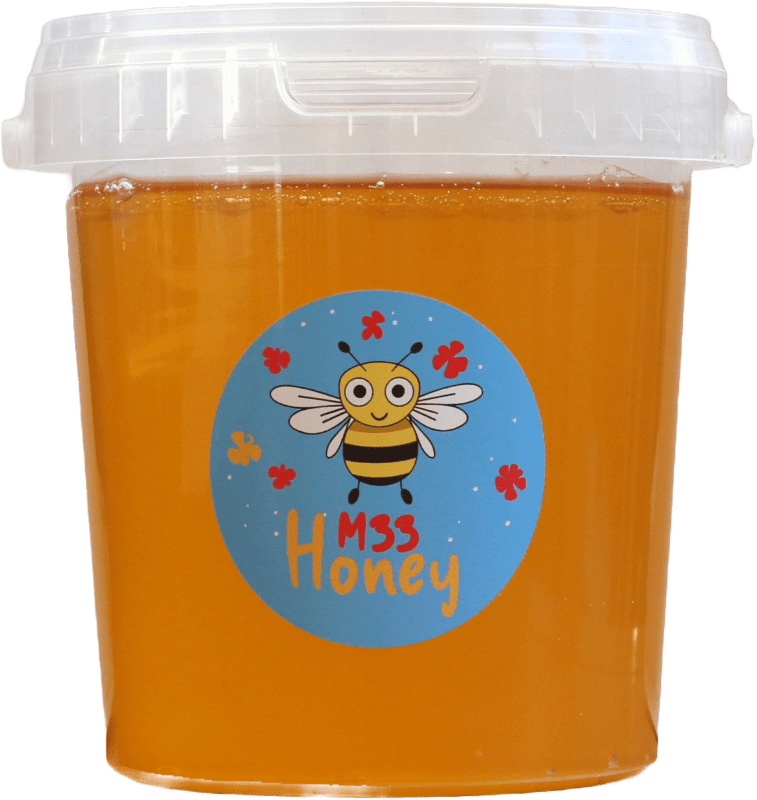

November ’24 – Summer ’24 honey available
With the hives closed for the year we headed off to Brussels (a first for Max and me) for a very nice family visit. It is always interesting going to new countries and seeing the different honey varieties available on the market stalls and the different ways it is used. In Belgium, the revelation for me was seeing a “fill your own” honey section in an organic and sustainable food shop called The Barn.
This month we sold out of our spring honey, but after a good summer harvest we have plenty of summer honey available to buy. We also took advantage of the Black Friday sales to make some purchases for the 2025 bee season ahead. In the sale we bought some clearer boards, a board used to separate the bees from honey supers before honey extraction. This will make the process quicker and easier four us with the added advantage of disturbing the bee colonies less.
October ’24 – Time for cake
After a busy week extracting honey, we took off a couple of days to relax and eat honey cake. We then set to work once again jarring some of our spring M33 Honey and informed our amazing customers from last year that it was available to buy. As we write this latest entry, there is still some available should you wish to try it.
Whilst we do sell some of our honey to help pay for equipment and treatments, we make sure to enjoy the honey ourselves too. Having a good supply means we can add honey to meals, drinks and slap it on toast with peanut butter. It also enables us to experiment and try new things. This year Max has asked if we could have a go at making mead. Probably not the usual choice for a 13-year-old, but I suspect seeing Welsh meadery Mountain Mead at an artisanal market in Betws-y-Coed and a love for Norse mythology may have something to do with it.
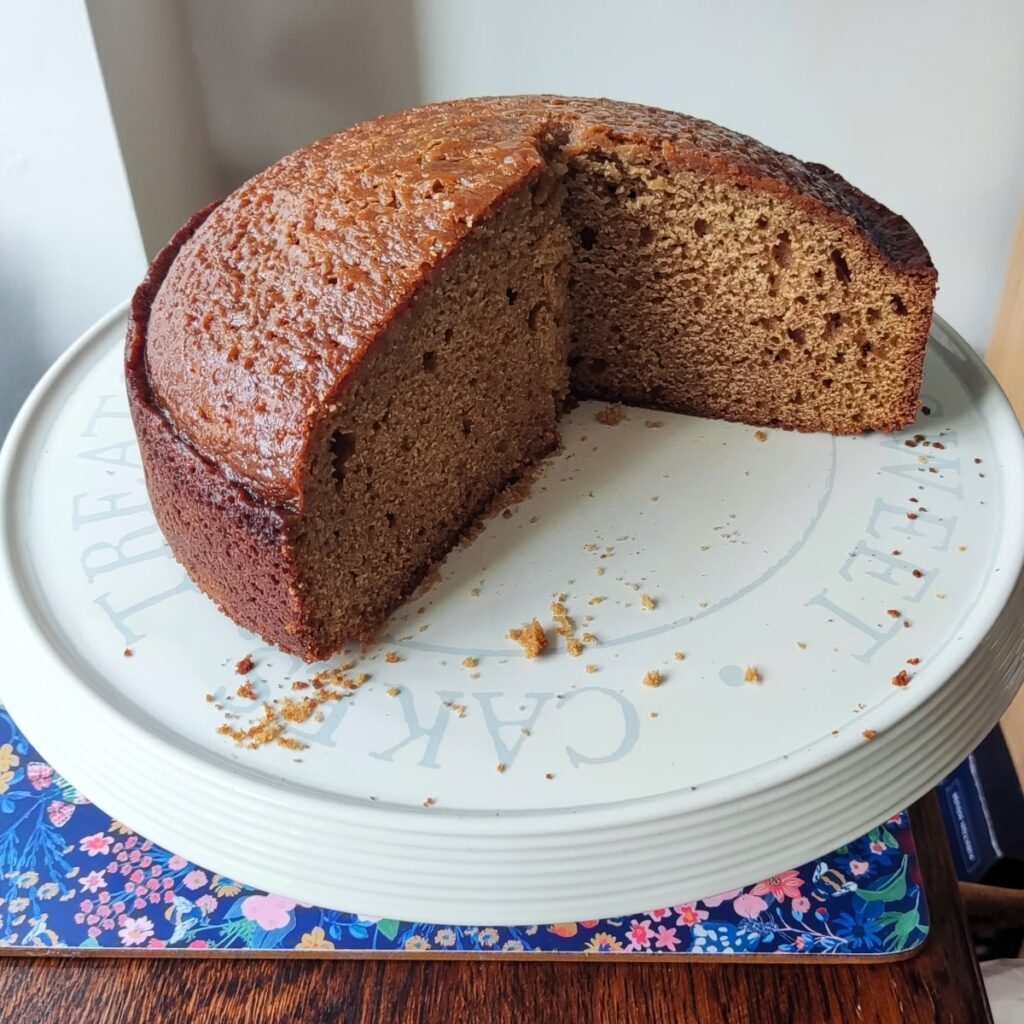
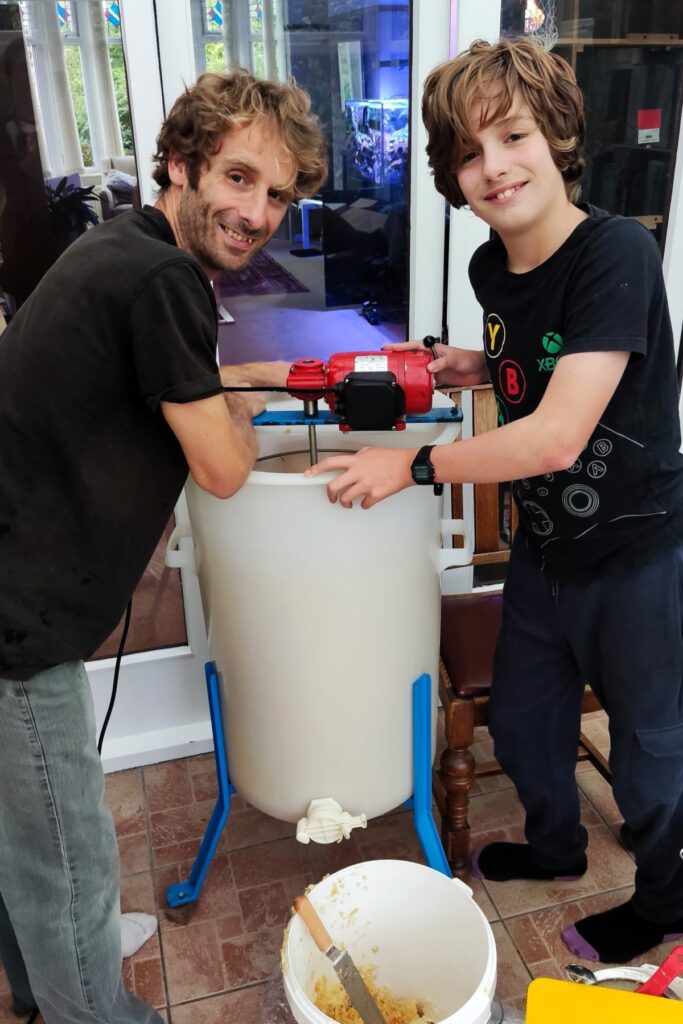
September ’24 – Extracting day and night
A key piece of beekeeping equipment, if you want to efficiently extract the spoils, is a honey extractor. Not much to look at, these are an expensive piece of kit. Thankfully, as part of our membership with the Manchester Beekeepers Association, we can hire one. Unfortunately, every beekeeper in the association wants to hire one at the same time so we had to be patient and wait our turn. This meant waiting until the end of the month.
Thankfully, despite being concerned, the wait worked out well. We saw nice weather continue through September which allowed the bees to continue to forage the Himalayan Balsam and Ivy up until we picked-up the honey extractor. The concern as to whether it would remain warm enough to complete our varroa mite treatment was allayed as the sun continued to shine through to the end of the month and into October. The bee gods were on our side.
Now armed with our honey extractor we set to work during our allotted week. Weekend days and workday evenings were taken up with uncapping frames filled with honey, extracting and sieving. Whilst the spring harvest was modest, the summer harvest was good and according to our official honey tester the honey this year is better than last. It will be interesting to hear what everyone else thinks.
August ’24 – Bringing home the nectar
We spent a large part of August holidaying in Canada, leaving the hives in the capable hands of Chung, a local beekeeper.
Whilst we were eating our way through Montreal and staring at large waterfalls in Ontario, it seems the bees made the most out of some hot days back home to bring in the nectar. So much so that we came home to 5 supers (the boxes where the bees store the honey) full of honey which was a very pleasant surprise.
We now need to extract the honey from the supers, but it looks like we won’t have a honey extractor until the 22nd of September. Honey extractors are used infrequently and are not cheap, so we are currently reliant on hiring one from the Manchester & District Beekeepers Association. We’ll see how honey sales go this year and perhaps once again consider the £20 rental fee vs. £800+ purchase for an equivalent honey extractor.

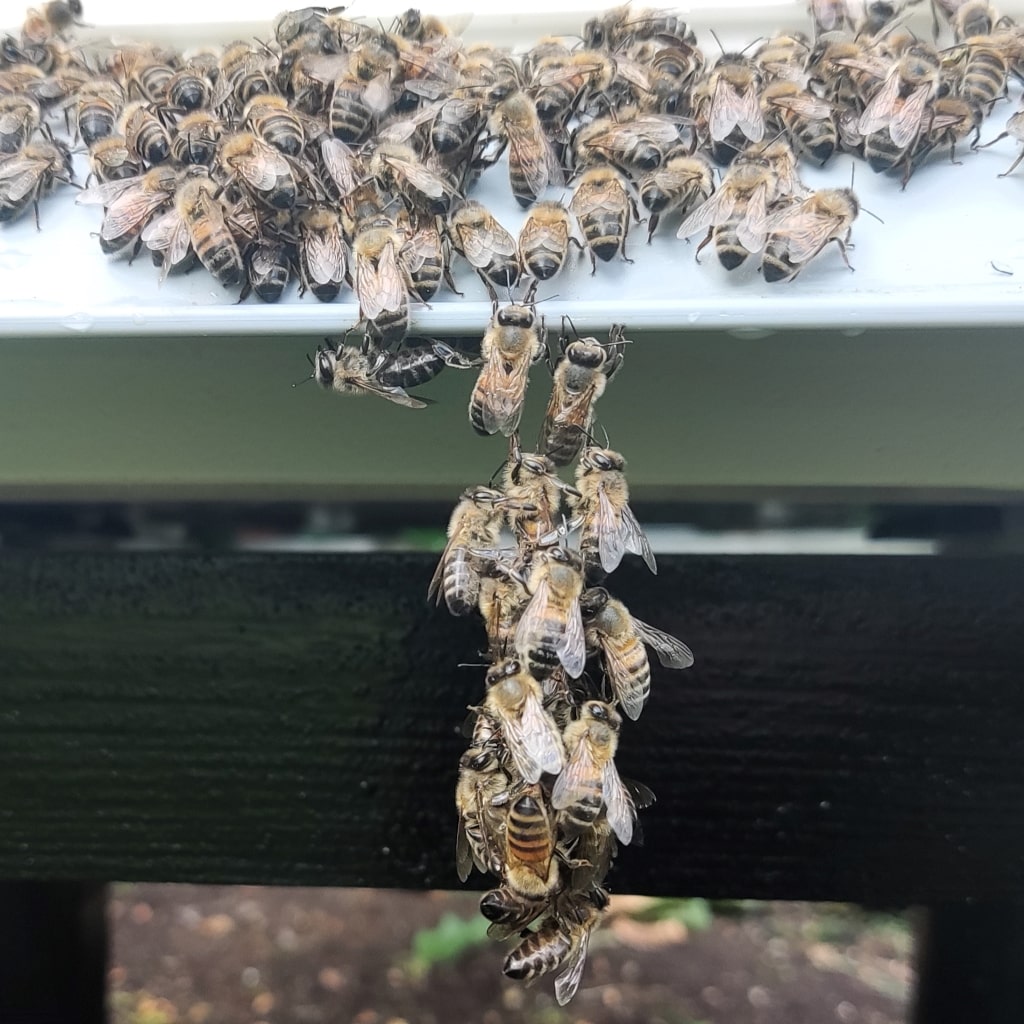
July ’24 – Acrobatic bees
How things have changed. After bad weather and concerns of bee starvation, we are seeing bees perform acrobatics as they look to reduce the temperature inside the hive, frames full of wet honey (i.e. honey that is not yet 18% or less moisture) and some frames with capped honey ready for extraction. We are also seeing positive signs in our attempts to requeen two of our colonies, but I think we’ll leave these be until September after we return from a trip to Canada.
With a trip to Canada in mind, we spent early July planning. To reduce any chance of swarming, we have built and stacked empty super boxes (the boxes where the bees put the honey) on top of our hives to ensure the bees have plenty of space reducing the likelihood of swarming. We have also called in help from local beekeeper Chung who will be inspecting the hives in our absence. So, a massive thanks to Chung for this huge favour!
June ’24 – It’s a ‘funny’ year
Last month we saw little in the way of honey in the hives whilst other beekeepers saw a strong nectar flow and took a honey crop. Unfortunately, many of the other beekeepers are now reporting that they have lost colonies due to starvation during the consistent bad weather we’ve been having. Thankfully we didn’t take any honey from our hives and distributed the honey that had been produced meaning food at least hasn’t caused any issues.
The weather has improved towards the end of June, and we are really seeing the colony size increase in the two hives that have queens. Of the other three hives, we can confirm that we have two with drone laying queens and one with an egg laying worker. Due to the colony sizes, we have attempted to merge two of the colonies. In the remaining two colonies we have put a frame of eggs in each to see if the workers will create new queens.
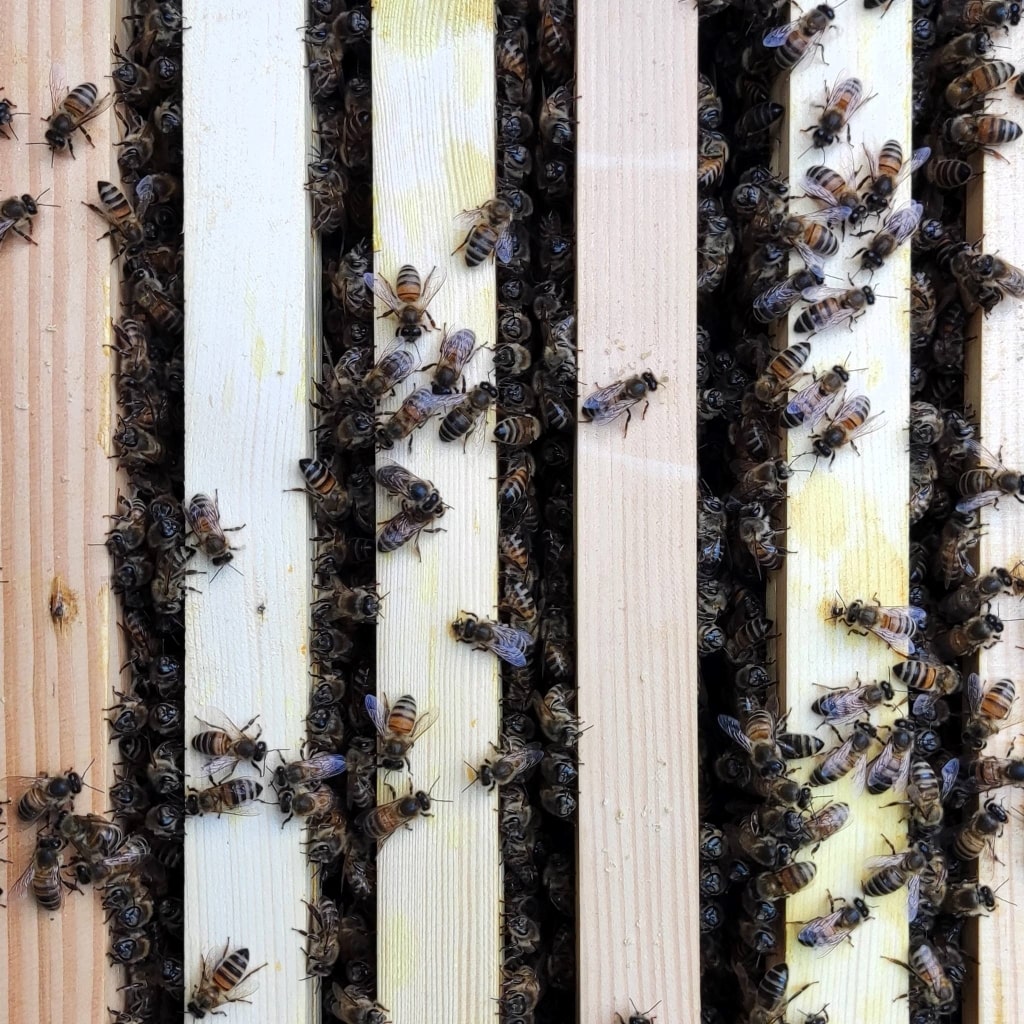
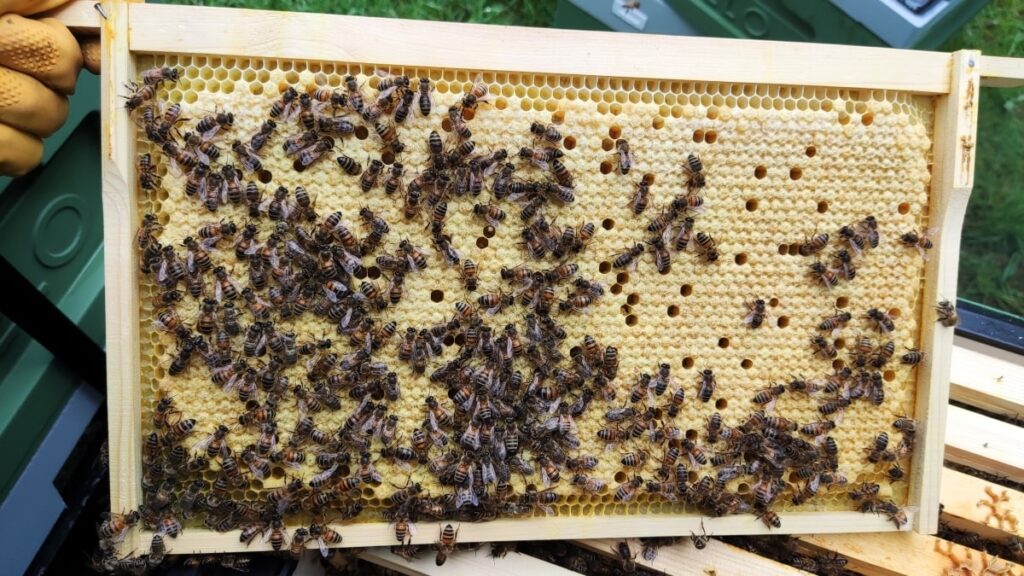
May ’24 – Drone laying queens
Other beekeepers in the area have reported a strong nectar flow during May. With the splits we made in April, it seems our colonies were not of a size to take full advantage of the flow and we are not seeing much in the way of honey in the hives. I get the feeling this year is not going to be our year for honey and instead we’ll focus on developing five strong hives for next year.
Before the last long weekend of April we grabbed a dry moment and checked the hives before leaving for a break. Things started well with the first two colonies (our queens from last year). Whilst they had fewer bees than we expected, they showed a good egg laying pattern. Of the three colonies left (the splits we made last month), from previous inspections, we suspected one might be queenless with an egg laying worker, which looks to be true (a worker bee will lay unfertilised eggs in the absence of a queen – only drones develop from these eggs). In the two remaining colonies we had in the past seen a good egg laying pattern, but on inspection it looks like we might have two drone laying queens. As these two queens emerged this year, this will most likely be because these queens were not mated properly or have been damaged in some way. We will inspect the hives again next month to confirm and come-up with an action plan.
April ’24 – Caught out by an early swarm
Saturday 6th April, temperatures were set to hit 18 °C and the afternoon was earmarked for our first hive inspections. However, whilst having an Escape Room experience with Max and his friends, a little birthday get together, messages from the other half started to come through saying the bees were swarming. We were in a bit of disbelief, but she was right!
The swarm had settled conveniently on a Camelia in a very understanding neighbours garden. The swarm was easily collected and put in a Nuc box (a temporary home, smaller than a hive).
When we came to inspect the hives we found them to be overflowing with bees. This was a bit of a surprise as we were worried they might have been starving given the mild winter. On inspection we also found a number of capped queen cells so we split the colonies as follows: previous year hive with queen, previous year hive with capped queen cell, swarm placed in a Nuc box (previous year queen) and 2 * splits placed in a Nuc box (a split involves taking a capped queen cell, bees and brood from an existing colony to create a new one).
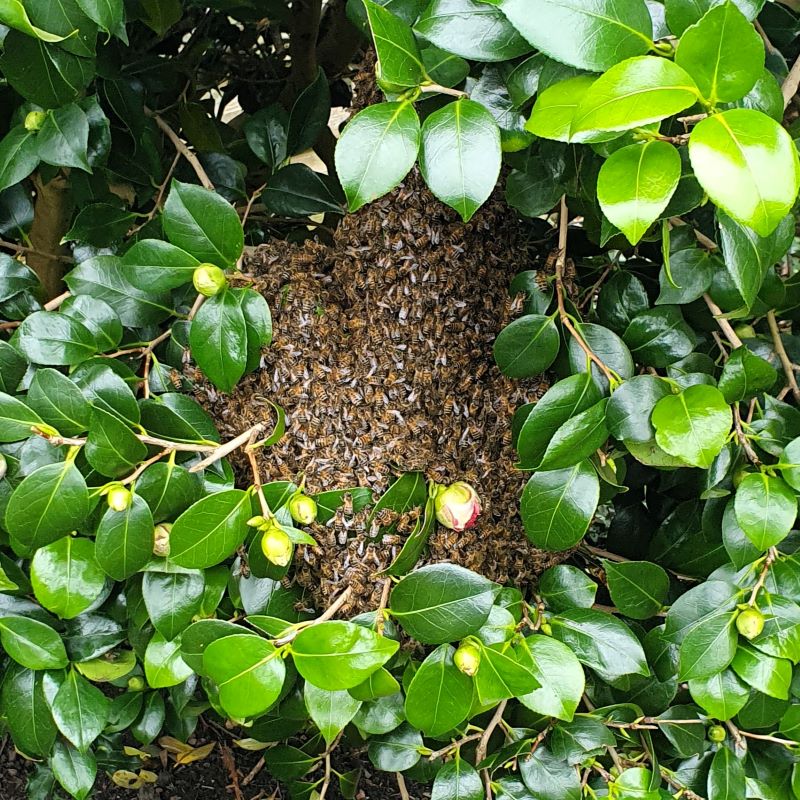

March ’24 – Feeling positive
It feels like an age since we were last able to check on the bees and it still feels like it will be a wait until we are able to in the future. With the mild weather we are seeing the bees leave the hive. Whilst it feels like the colonies are strong and potentially growing, we need to make sure adequate food is available. All in all, we’re feeling confident both hives will get through what remains of winter.
February ’24 – A tinge of guilt
As emails and messages come through from people wanting honey, there is a tinge of guilt as we tuck into our giant jars for breakfast, treats and cups of tea. Saying that, it is nice to know that our honey is wanted and appreciated, and we hope to have some available to buy later this year.
At the hives there has been little to do other than observe and marvel. We replaced the fondant added in January which was consumed creating an empty space that the bees quickly filled with burr comb (this is extra comb built by bees that essentially makes a beekeeper’s life a little more difficult). This could be a sign that the bees are running out of space inside the hive which would mean there is a lot of brood being reared. This is positive, but all of this brood will need feeding and that is where food stores, forage and weather all come into play. We’d love to crack open the hives and see where everything is at, but it is still too cold as it will be throughout March. Instead, we’re going to have to heft the hives and if needs be find a way to get more fondant onto them (perhaps easier said than done).


January ’24 – Finding time to think bees
It seems that with every year, January, and for that matter every month, gets quicker and quicker. This January didn’t fail, but we still found some time to think bees.
Time was reserved over a weekend to finally build our Black Friday purchases. With that now complete, we can start thinking ahead and putting together a plan to split one of the bee colonies to hopefully give us three by the season’s end. This will bring us to the limit for our back garden and it will increase the likelihood of having multiple colonies survive future winters. Another reason to do this now is that our founding queen bee, which we rehomed last season, is of an unknown age. Given queen bees typically live 2 to 3 years (but up to 5 years), becoming less productive over time meaning smaller colonies, we have to consider that she will not be with us forever and will need replacing at some point.
Towards the end of January, after hefting the hives (simply lifting one side of a hive to get a feel as to the weight), we decided to feed the bees with fondant. This was done as one of the hives felt a little light and given the relatively warm weather it is quite possible that the bees have been active and consumed a lot of their winter stores. With this in mind, and reports of bees being lost to starvation, it made sense to go to the little effort of adding some fondant. When we did, we saw the bees immediately investigating the fondant . We’ll check back at the start of February to see if it needs topping-up.
